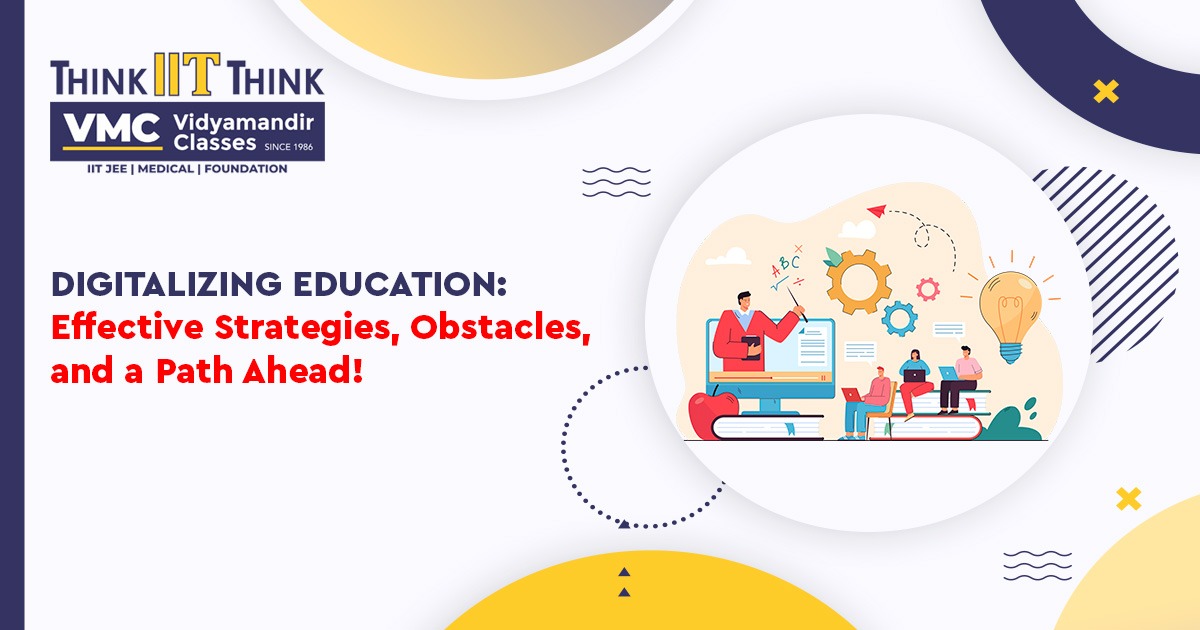Digitalizing Education: Effective Strategies, Obstacles, and a Path Ahead!
 Posted On
Posted On
256 total views, 2 views today
The digital revolution has had a profound impact on education, with the digitization of learning becoming increasingly prevalent in modern classrooms. From online courses to e-books, digitization has opened up new opportunities for both educators and students. In this blog post, we will explore the best practices, challenges, and the way forward for digitization in education.
Best Practices
Personalization: One of the main benefits of digitization in education is the ability to personalize learning. With the use of technology, educators can provide customized learning experiences tailored to the individual needs of each student. This can include personalized assessments, adaptive learning programs, and individualized feedback.
Collaboration: Digitization can also facilitate collaboration among students and teachers. Online platforms allow for group discussions and peer-to-peer interactions that can enhance learning outcomes. Tools like video conferencing and online whiteboards also enable remote collaboration, providing more opportunities for students to work together regardless of location.
Accessibility: Digitization can improve accessibility to education for students with disabilities or those living in remote areas. Online courses and digital resources make it easier for these students to access educational materials and participate in learning activities.
Innovation: The digitization of education has led to the development of innovative teaching methods and learning tools. For example, gamification has become a popular way to engage students and make learning more interactive and fun.
Challenges
Infrastructure: One of the biggest challenges of digitization in education is ensuring that schools and universities have the necessary infrastructure to support it. This includes reliable internet access, computers, and other technology tools. Without proper infrastructure, students may not be able to fully participate in digital learning activities.
Training: Another challenge is ensuring that teachers and students have the necessary skills to use digital tools effectively. Teachers may need training on how to integrate technology into their lessons, while students may need to learn how to use new software and hardware.
Cost: Implementing digitization in education can also be costly, especially for schools and universities with limited budgets. This includes the cost of hardware, software, and training.
Cybersecurity: As more data is stored and shared online, cybersecurity has become a growing concern in education. Schools and universities must take steps to protect student data and ensure that digital platforms are secure.
The Way Forward
Infrastructure Development: To overcome the challenges of digitization in education, it is essential to develop the necessary infrastructure. This includes providing schools and universities with reliable internet access and modern technology tools.
Teacher Training: Providing teachers with training on how to use digital tools effectively is critical to the success of digitization in education. This can include workshops, online courses, and ongoing professional development opportunities.
Cost Reduction: To make digitization more accessible, schools and universities can explore ways to reduce costs. This can include partnering with technology companies or using open-source software.
Cybersecurity Measures: To protect student data, schools and universities must implement robust cybersecurity measures. This includes data encryption, regular software updates, and ongoing staff training on cybersecurity best practices.
Final Thoughts
In conclusion, the digitization of education presents both opportunities and challenges. By implementing best practices such as personalization, collaboration, accessibility, and innovation, schools and universities can provide students with a more engaging and effective learning experience. However, overcoming challenges such as infrastructure, training, cost, and cybersecurity will require ongoing efforts and investments. By taking the necessary steps, we can ensure that digitization in education continues to evolve and benefit students for years to come.



